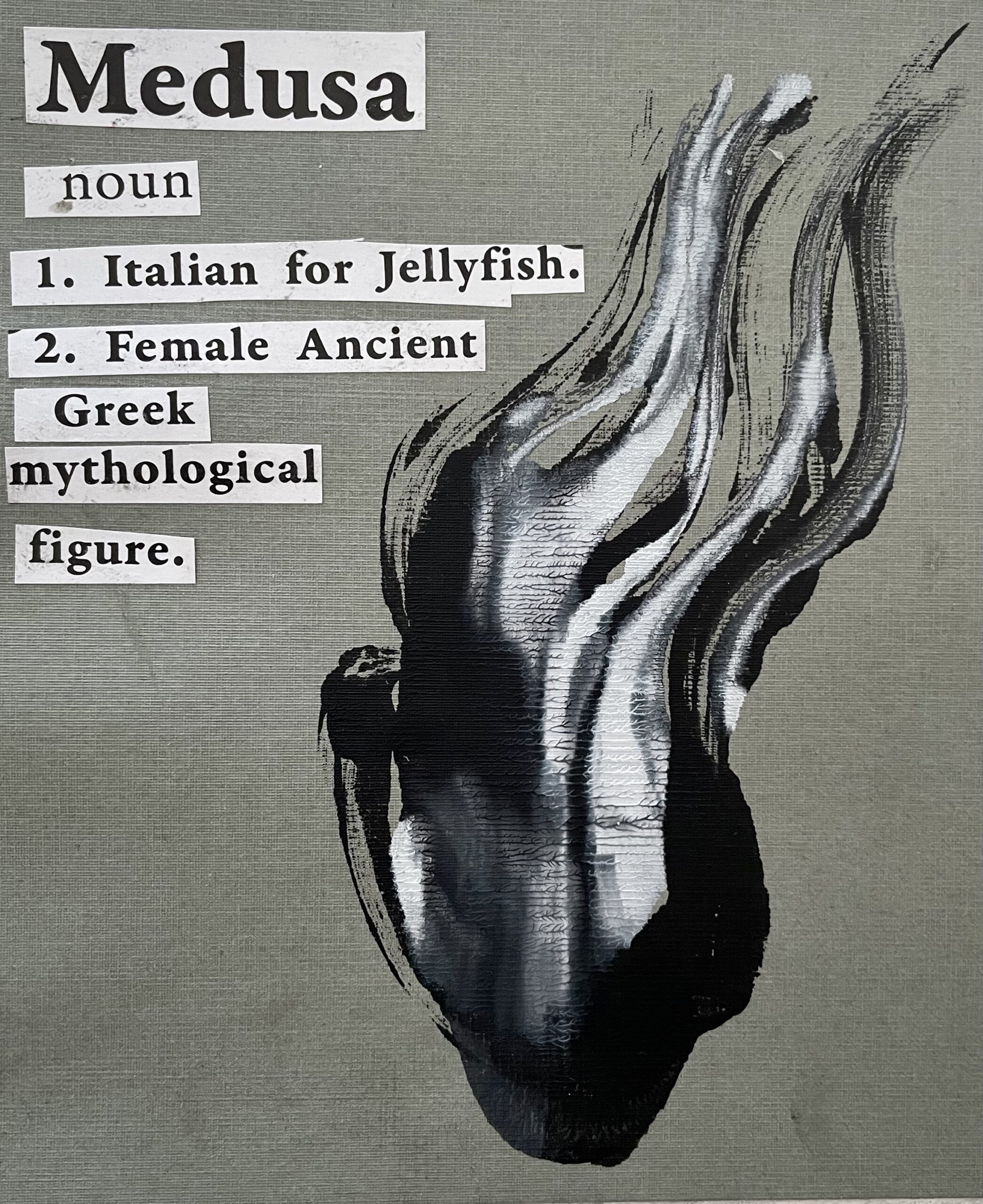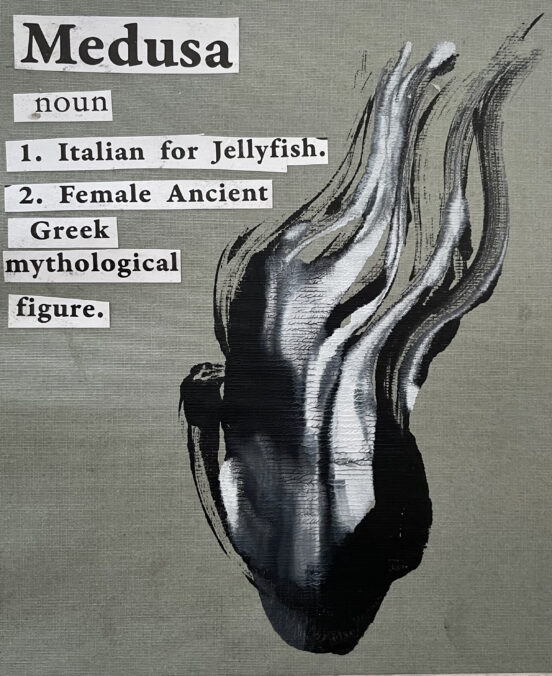
Medusa was protecting herself.
Near them their sisters three, the Gorgons, winged
With snakes for hair—hatred of mortal man—
According to Ovid’s telling of the myth, Medusa was a beautiful maiden, a Priestess of Athena, who had sex with Poseidon in Athena’s temple. Athena punished Medusa by turning her hair into fearful snakes, capable of turning onlookers to stone. Eventually, Medusa was beheaded whilst pregnant (carrying Poseidon’s offspring, Pegasus and Chrysaor) by Perseus, who took her head and continued to use it as a weapon, turning enemies who looked upon it to stone — until he eventually returned the head to Athena, and went on to marry the princess Andromeda, who just so happened to be the most beautiful woman in the world at that time.
Or at least; that’s the version men have written down for centuries. A woman of loose morals had sex in a temple and got punished for it, until a brave male hero chopped off her head and saved the day.
Poseidon was a God. He also happened to be an enemy of Athena. So, to spite his foe, he decided to rape her priestess right inside her temple – humiliating the priestess, and breaking the vow of celibacy she had taken in service to Athena. The Gods took their lovers as life partners, and that’s how Medusa came to be Poseidon’s wife. Medusa wasn’t charmed and in love – she was deceived, raped, claimed.
Medusa prayed to Athena after her rape, begging for forgiveness, guidance, mercy on her broken vow of celibacy. Now, Athena was very much a Goddess in a God’s club at this point. But Athena wouldn’t – couldn’t – blame her priestess Medusa for being raped by her God enemy Poseidon. So, Athena protected Medusa at all costs.
Instead of punishing Medusa with a head of snakes that could turn men to stone, Athena protected her. Athena blessed Medusa with the ability to defend herself, and her daughters, from men. So she would never be hurt again.
But to the male Gods around Athena, this was punishment enough. Stripping Medusa of her beauty (the only value a woman really has, right?) and sending her away was about as bad as it could get for her.
Enter Perseus – our brave “hero” of the hour. Who travelled – as many before him had attempted to – to the island where Medusa was staying. Not harming anyone, not causing horror, and beheaded the “monster”. He even kept her lifeless head to use as a weapon after her death.
For her beauty, her virtue and her kindness – Medusa was raped.
For her ability to defend herself – Medusa was murdered.
Medusa’s story is the same dichotomy that travels through art, literature, the tabloids and the news to this day. A woman can either be beautiful, virtuous, passive, kind, so that they can pacify the male gaze and be well behaved in the eyes of patriarchal society. Or, she can be assertive, able to defend herself, not pandering to the male gaze’s ideals – in which case they are dangerous, the downfall of men and something to fear.
If you look at women’s shelters and safe houses even today, you’ll see Medusa’s head above the door. Because Medusa wasn’t a monster. Medusa was a woman who was the victim of men, who protected herself and her daughters.
Medusa was defending herself.








